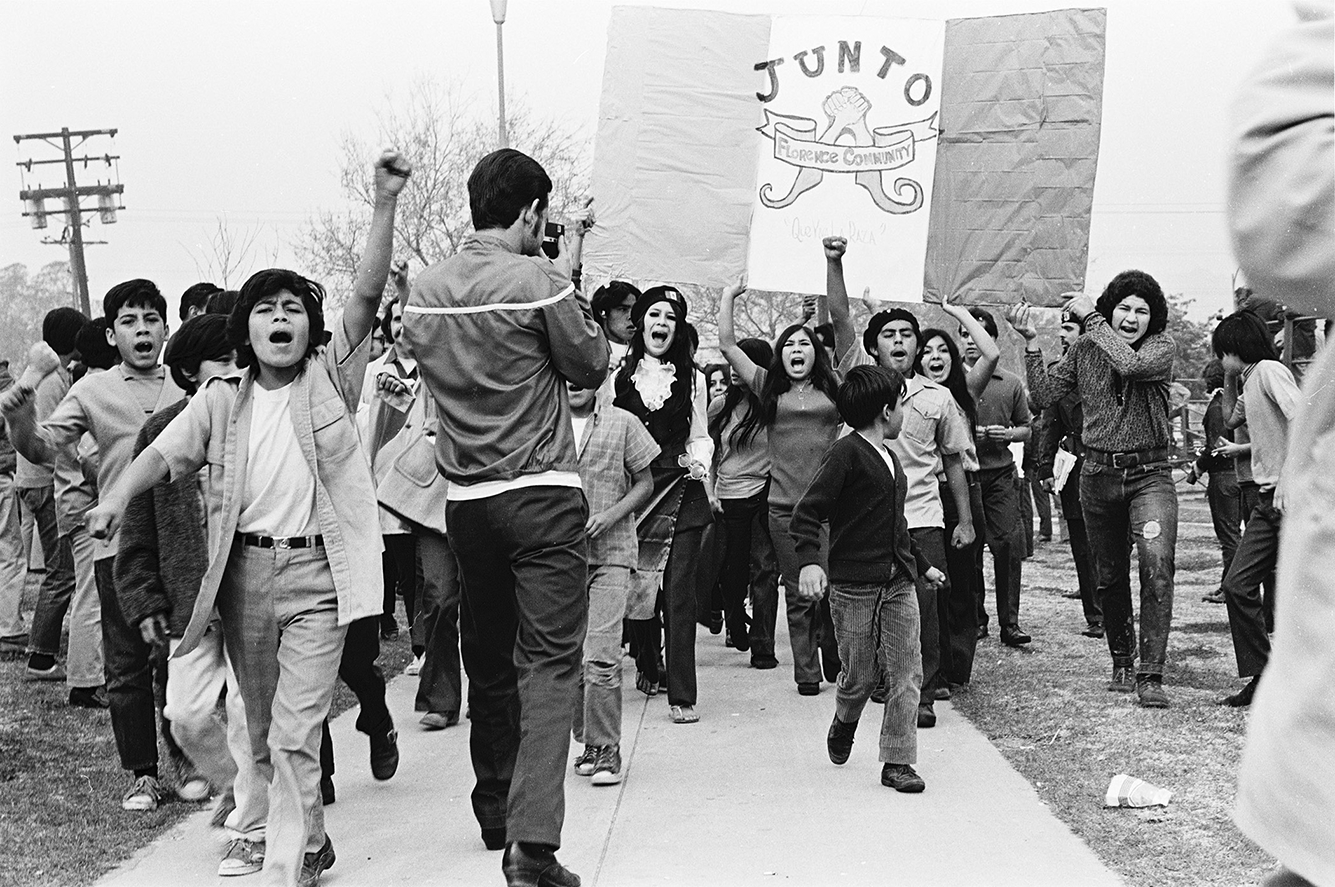Skip to content

Starting in a Watts housing project, Johnnie Tillmon built a pioneer welfare rights organization that became a model for other cities. Being on welfare, she said, was like being in a “supersexist marriage: You trade in ‘a’ man for ‘The’ Man,” but you can’t divorce him if he treats you bad. He can divorce you, of course—cut you off—any time he wants. But in that case, ‘he’ keeps the kids, not you.” Here she addresses Mother’s Day March, with welfare rights leader George A. Wiley sitting beside her and Ethel Kennedy looking on, Washington, D.C., circa 1968–1969. Photo credit: George A. Wiley Papers/Wisconsin Historical Society. WHi-8771. Noah Purifoy at Watts Towers Arts Center, circa 1965. Purifoy, a sculptor, was part of the “Watts Renaissance” that included the free jazz of Horace Tapscott, plus dancers, writers, actors, filmmakers, and poets, whose creative energies had been unleashed by the rebellion. Courtesy Noah Purifoy Foundation © 2019, image provided by Richard Candida Smith. In April 1962, after an altercation where a cop was shot, LAPD officers attacked the Black Muslim mosque, a block away, where unarmed members were leaving after evening prayers. The final tally: one Muslim man dead, seven others seriously wounded, fourteen arraigned on felonies, and the mosque ransacked. Malcolm, at the funeral, praised LA Black organizations for protesting the attack: “Our unity shocked them and we should continue to shock the white man by working together.” Photo credit: Gordon Parks, Malcolm X Holding up Black Muslim Newspaper, Chicago, Illinois, 1963. © The Gordon Parks Foundation.

